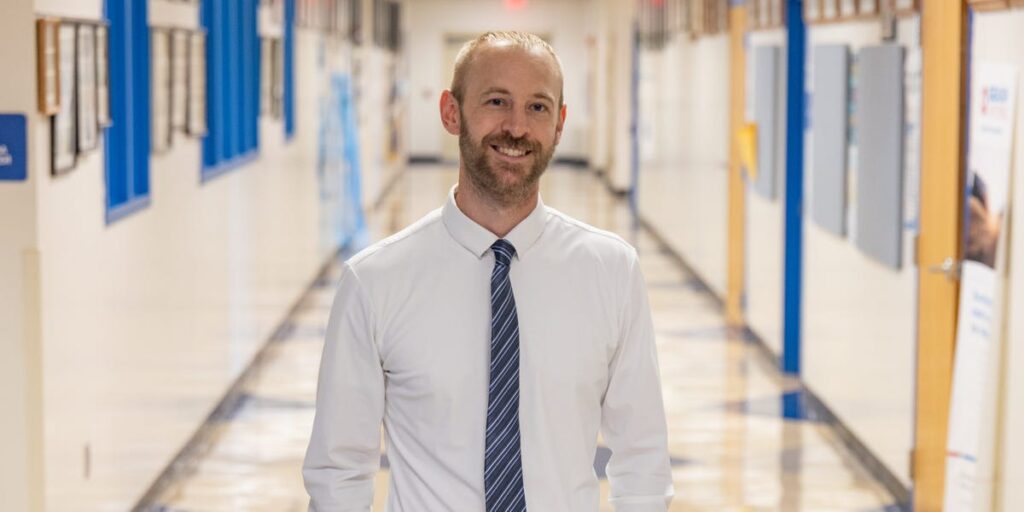This as-told-to essay is based on a conversation with Joseph Samuelson, the principal at Upton High School in Wyoming. It has been edited for length and clarity.
I would never want to go back to a traditional teaching model.
I remember going to a school board meeting about eight years ago, and the community was up in arms about Upton High School’s decision to switch to personalized learning. I was the local middle school’s social studies teacher at the time, and when the high school overhauled its learning model, mistakes were made. Parents weren’t given enough heads-up on what personalized learning meant, teachers didn’t have proper training, and it led to both staff and students leaving the school.
It took time to get over those initial humps, but I watched as teachers started to individualize their curriculum and shift away from what many parents thought personalized learning was: an online platform where kids learn from virtual programs, instead of teachers.
As more staff at the high school started to shift away from the standard lecture and grading system structure in favor of open periods where students — not teachers — could choose how they wanted to practice what they learned, I saw how students benefited from the personalized structure. They are more motivated and excited about their schoolwork and have developed personal agency through being able to direct their own educational paths.
I remember seeing that shift during one class. I was busy taking care of something else for the first 10 minutes, and I hadn’t addressed my students yet, but they all took the initiative to start working on their own projects. I started to see that learner agency and self-sufficiency kicked in, and I really liked that.
Shane Epping for BI
Our students have had to accept through this model that the only option they have is to learn, and while failing is okay, quitting is not. There’s no substitute for hard work, and we pride ourselves on instilling that work ethic in our students.
Beyond personalized learning, our high school doesn’t promote college as the main path students should take. Our vision is to prepare students for college, career, or the military — we don’t push any path over the other. Our only job is to ensure our students have the tools to excel in whichever path they choose, and we do all that we can to make that happen.
Getting rid of invisible walls that block students from their best path
I’ve seen firsthand how giving our students pathways to multiple routes — not just college — after graduation has changed their trajectories. I had one student who never liked school, and he didn’t excel in the traditional model. It got to a point where his parents weren’t sure he would even make it to graduation.
Our personalized structure completely changed the game for him. When he said that college wasn’t his goal and that he wanted to pursue his hunting passion, we worked to make that a reality. Our guidance counselor arranged a hunting guide apprenticeship for him, and we allowed him to take time off from school. We were able to turn things around for him, and a kid who wouldn’t even pick up a book at the start of his high school experience is now reading about agriculture and hunting for fun.
I stand firmly behind our personalized learning model, and I think it would benefit kids across the country. But everything is slower in the world of education, and change is hard. We’ve had representatives from other schools visit us, and many of them have said that they’re interested in switching over, but it’s too much work to implement in their own districts.
Shane Epping for BI
Students are also increasingly realizing that they don’t have to go to college to be successful. Before we switched to personalized learning, most kids would graduate from high school and go to the University of Wyoming — that was the default. But I would see some of those kids go to the university, skip class, and ultimately fail because college was never the right fit for them.
That’s starting to change. We’re seeing more kids pick two-year schools over the standard four-year college experience. At the same time, we want to make sure every student has the preparation for college if that’s their goal; about 40% of our students had a college credit last year, and I prefer to have students take their first college class with us so they are prepared to navigate tough professors, learn time management, and get college-level feedback.
We don’t let our students shut down when things get tough — we give them advice and the resources to help them persevere.

